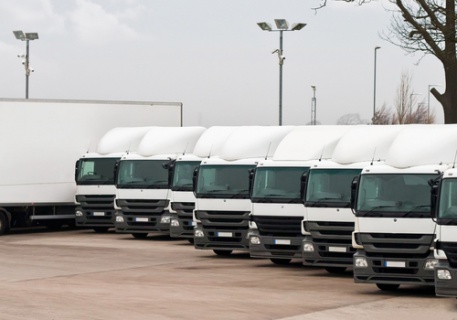Fleet Management Gets Smart

Big Data has arrived in the trucking sector.
Last year, less than half of the 12 major global original equipment manufacturers (OEMs) were developing Big Data strategies. Before the end of the decade, 100 percent of the top OEMs will use Big Data to improve their business models, according to a Frost and Sullivan report, the results of which were announced last week (May 14). The report takes an in-depth look at the role of Big Data in the trucking industry, in both the United States and Europe.
Companies making the transition to Big Data aren’t doing it alone. A sustainable strategy relies on collaboration and coordination among IT suppliers, Frost and Sullivan researchers note; as Big Data begins to play a larger role, OEMs will increasingly rely on IT companies for analytics, vehicular system security and customizable design. Finding the right partner is essential to the rise of Big Data regardless of industry. Most companies lack the internal expertise and are looking for help navigating this unfamiliar landscape.
When it comes to embracing Big Data, the commercial fleet and trucking industries have an advantage over other sectors. Fleets are already high-tech, as telematics and other M2M communications are standard for many fleets. The challenge isn’t collecting data, but harnessing the power of it. The report cites several opportunities where OEMs can monetize the insights of Big Data, from entering business segments other than automotive to growing revenues from value added services such as warranties and service.
Fleets are getting smarter, and so are the systems used to manage them. A recent MarketsandMarkets study estimates the market for fleet management systems will grow to $35 billion by 2019, a more than $20 billion increase from its current value.
Increased competition, CO2 emission control norms and rising fuel costs are a few of the issues making fleet management systems essential to modern fleet management, according to the report. Data can reveal operational efficiencies by monitoring vehicle performance and mileage; improve operational reliability and safety, maintenance planning, driver control, and optimizing navigation and routes—without a system to present the data, its value is lost.
The flow of data won’t slow down anytime soon, as more vehicles are on the road thanks to rapid growth in emerging economies. The MarketsandMarkets report reveals the Asia-Pacific region will lead the global growth rate. The region is expected to have the highest growth rates in fleet management revenue. Pending policy changes will also bolster the amount of data processed by fleets everyday. In India, built-in GPS units are now required in cabs, including those of aggregators like Uber. The move is framed to improve passenger safety, but it will also provide a wealth of information to fleet managers. In the United States, an electronic logging mandate will become effective in October 2015, with demand for 100 percent compliance within two years.
Big Data has big potential, yet few companies have discovered how to leverage it in actionable ways. Benefits are clear real-time sharing and collaboration, better customer service and possible new revenue streams from value added services. The authors of the Frost and Sullivan survey believe change is a few short years away. By 2020, they anticipate terms like “functional obsolescence,” how long a vehicle is viable, and “economic obsolescence,” when is the optimal financial point to replace a vehicle, will be standard. Data becomes a decision-making partner and with smart fleet management systems future and past performance will be at managers’ fingertips. Fleet management isn’t there yet, a recent survey shows managers aren’t comfortable with letting data lead the decision-making process. For now, instincts trump data.
